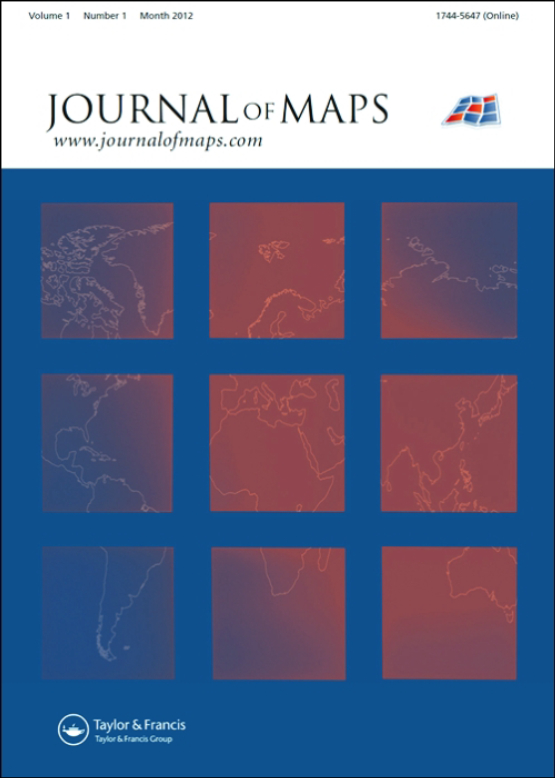Submit a Manuscript to the Journal
Journal of Maps
For an Article Collection on
Maps of Conflict, Peace, and the Spaces in Between
Abstract deadline
Manuscript deadline


Article collection guest advisor(s)
Dr Mela Žuljević,
Leibniz Institute for Regional Geography
M_Zuljevic@leibniz-ifl.de
Dr Sofia Gavrilova,
Leibniz Institute for Regional Geography
S_Gavrilova@leibniz-ifl.de
Dr Jana Moser,
Leibniz Institute for Regional Geography
J_Moser@leibniz-ifl.de
Maps of Conflict, Peace, and the Spaces in Between
Maps and spatial visualisations are crucial resources and tools in peace and conflict research, and this field relies increasingly on new advances in cartographic and GIS methods. As articulations of the ability to ‘see from above’, maps have historically enabled forms of power, war and violence. They have not only visualised conflicts but also actively contributed to their continuation or resolution in different capacities. On the one hand, maps have been used to justify conflicts, for example, by representing land as ethnic property to serve ethno-territorial and irredentist agendas. On the other hand, maps have also provided indispensable assistance to peace processes, facilitating potential compromises by presenting alternative visions for ordering a region, which can inform new modes of thinking and debate. Countermapping has also proven to be a powerful tool for bottom-up peace and cross-border cooperation movements.
Today, when there are multiple violent conflicts taking place simultaneously around the globe, and the budgets for military, defence and security investments increase worldwide, critical mapping approaches are even more important to visualise and articulate the complexities and overlaps of conflicts with broader socio-spatial processes. Cartography can help engage with critical questions in these moments, such as those of representing multiple perspectives in conflict processes, their imbricated spatialities and temporalities, their durability and transformation to slow violence, and their interactions with (everyday) peace processes. Translation of critical and processual perspectives of conflict into map production is a challenging task, crucial for developing multiperspective and multiscalar maps which can counter the proliferation of stereotypical and simplistic cartographic visualisations in the representation of conflicts.
For this Article Collection in Journal of Maps, we invite contributions in the form of maps and spatial visualisations on the topic of Maps of conflict, peace, and their “in-betweens”, accompanied by explanatory and reflective texts (between 2,000 and 4,000 words).The Collection intends to assemble contributions which strengthen the research on visualisations of peace and conflict, articulate multiple perspectives of conflicts, and reveal possible applications of mapping and spatial analysis in researching peace and conflict. We particularly encourage explorations of critical, multiperspective and creative visualisation methods, techniques and tools for representing and analysing peace and conflict processes. Contributions should focus on conflicts and peace processes from the 20th century onward, while the geographic context is not limited to a specific region. We are interested in maps and spatial visualisations on various scales and subtopics such as visualising borders and bordermaking, sensitive data (e.g. on war crimes and trauma), slow violence, overlaps of peace and conflict, environmental conflicts, authoritarianism, geopolitical dynamics and security tensions, nation-building, international regional cooperation, everyday peacemaking, postwar development, and transition.
Prior to submission, authors should send an abstract that will be reviewed by the guest advisors. Please ensure that you submit an abstract directly to the Advisors (contact details above) as soon as possible and no later than 1 March 2026. After the abstract review, the selected authors will be invited to submit to the Journal of Maps by 1 May 2026.
All manuscripts submitted to this Article Collection will undergo a full peer review; the Guest Advisors for this Collection will not be handling the manuscripts (unless they are an Editorial Board member). Please review the journal's scope and author submission instructions prior to submitting a manuscript. Please contact Alex Johnson at Alex.Johnson@tandf.co.uk with any queries and discount codes regarding this Article Collection.
The Guest Advisors have declared no conflict of interest in the preparation of this Article Collection.
Benefits of publishing open access within Taylor & Francis
Global marketing and publicity, ensuring your research reaches the people you want it to.
Article Collections bring together the latest research on hot topics from influential researchers across the globe.
Rigorous peer review for every open access article.
Rapid online publication allowing you to share your work quickly.
Submission Instructions
All manuscripts submitted to this Article Collection will undergo desk assessment and peer-review as part of our standard editorial process. Guest Advisors for this collection will not be involved in peer-reviewing manuscripts unless they are an existing member of the Editorial Board. Please review the journal Aims and Scope and author submission instructions prior to submitting a manuscript.

